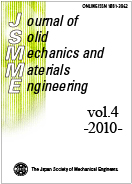Volume 4, Issue 4
Displaying 1-7 of 7 articles from this issue
- |<
- <
- 1
- >
- >|
Papers
-
2010 Volume 4 Issue 4 Pages 481-492
Published: 2010
Released on J-STAGE: April 30, 2010
Download PDF (465K) -
2010 Volume 4 Issue 4 Pages 493-507
Published: 2010
Released on J-STAGE: April 30, 2010
Download PDF (400K) -
2010 Volume 4 Issue 4 Pages 508-519
Published: 2010
Released on J-STAGE: April 30, 2010
Download PDF (1397K) -
2010 Volume 4 Issue 4 Pages 520-532
Published: 2010
Released on J-STAGE: April 30, 2010
Download PDF (984K) -
2010 Volume 4 Issue 4 Pages 533-544
Published: 2010
Released on J-STAGE: April 30, 2010
Download PDF (1510K) -
2010 Volume 4 Issue 4 Pages 545-556
Published: 2010
Released on J-STAGE: April 30, 2010
Download PDF (1748K) -
2010 Volume 4 Issue 4 Pages 557-567
Published: 2010
Released on J-STAGE: April 30, 2010
Download PDF (362K)
- |<
- <
- 1
- >
- >|
